Founded in 2003, Bluehost is a popular Utah-based web hosting company. t’s now owned by Endurance International Group, the people behind a lot of big tech names: Domain.com, iPage, HostGator, SiteBuilder.com and more.
Bluehost’s shared hosting products are clearly described on the website, with a fair amount of information about what you get for each of its plans.
The company doesn't try to fool you by offering an underpowered starter plan to get a low headline rate. Even the low-end Basic plan gives you 50GB storage, unmetered bandwidth and a free SSL certificate, and throws in a free domain.
Email options are limited with only 5 accounts supported and a small 100MB inbox for each, and unfortunately this isn't spelled out in the website comparison table. Still, otherwise it's a perfectly adequate product for many users, and reasonably priced at $2.95 a month over 36 months, rising to $7.99 on renewal. (Sign up for the minimum 12 months and you'll pay an initial $4.95.)

Cheapest Bluehost Shared Plan | $7.99 $2.75 p/m | 63% off
A fantastic bargain for TechRadar visitors, Bluehost has cut the price of its Shared Plan (regularly $7.99 p/m) down to a mere $2.75 per
month for the first term only. You get $175 in offers 24/7 support plus free domain and site builder and 30-day money-back guarantee.View Deal
The Choice Plus plan supports unlimited email accounts, can be used with as many domains as you need, and adds site backup, domain privacy and protection. It's available from $5.45 a month over 36 months, which is tempting, although it renews at $14.99 (opt for the annual plan and it's initially $7.95 monthly).
The Pro account ramps up performance, offers a dedicated IP and throws in a premium SSL certificate from $13.95 a month over 36 months ($14.95 annually), $23.99 on renewal.
Payments are protected via a 30-day money-back guarantee. That's the industry standard and should be enough to confirm that Bluehost is the right host for you, but some providers go further. InMotion Hosting, for example, offers an exceptional 90-day guarantee.
If you need more information, there's an in-depth list of what's included in every shared hosting plan on Bluehost's support page.
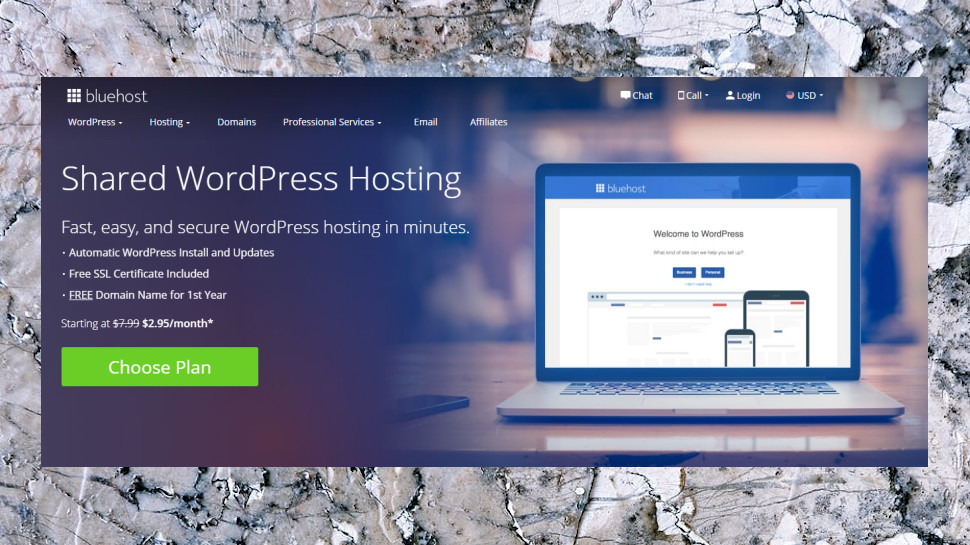
Application hosting
Bluehost has only a very minimal range of application hosting plans, but it just about manages to cover the essentials: WordPress and simple e-commerce.
The WordPress hosting plan is little more than the same shared hosting plans, with the same pricing (from $2.95 a month initially, $7.99 on renewal), and more emphasis on some WordPress-specific features (Bluehost updates WordPress automatically, plus there's some decent WordPress documentation and support).
Bluehost's WordPress Pro plan is more capable, giving you unlimited storage, bandwidth and websites, spam filtering, CDN integration and more.
Powerful WordPress-related extras include a staging environment, a convenient way to create and work on a copy of your existing site. If you're making some major changes – replacing a theme, switching one plugin for another – the staging feature enables testing these out without risking causing problems on your production site.
Business-oriented features include Jetpack Site Analytics, Premium or Pro (depending on your plan), a marketing center, PayPal integration and more.
These are capable products, and prices are fair from a standard $19.95 a month over three years ($29.99 on renewal) up to $49.95 ($59.99).
If you're only managing a single site and don't need the business features, check out IONOS' WordPress Pro, too. It limits your storage and supports just one website, but it gets you dedicated resources (from 1 vCPU and 1GB RAM) and Varnish-based caching on the Pro plan. Prices start at $18 a month, no long-term contract required.
Bluehost's e-commerce product is essentially shared hosting with WordPress, WooCommerce and Storefront themes pre-installed, a dedicated IP address, and a few marketing credits (spend $25 on a Microsoft Advertising or Google Ads account, get $100 credit).
Again, prices are reasonable, starting from $6.95 a month (renewal at $13.99.) The plans might be useful if you're an e-commerce newbie, but experienced users could get much the same results by finding their preferred shared hosting package and using Softaculous (or any other auto-installer) to set up a web store for themselves.
Servers
Bluehost's VPS plans may not look cheap, at least initially, but that's because the company doesn't try to cut corners to hit a low headline price.
VPS products start at $18.99 over 36 months ($29.99) on renewal, for instance, more expensive than some. But the specs are decent, and include 2 CPU cores and 2GB RAM, twice the allocation you'll get with many starter VPS setups, along with 30GB storage and 1TB bandwidth. Bluehost's custom control panel makes your service easy to manage, too.
If you're happy to accept a more basic system, Hostwinds' managed VPS plans are priced from an initial $5.17 a month (renews at $10.99). But that only gets you 1 CPU core, 1GB RAM, 30GB storage and 1TB bandwidth. Upgrade to a Hostwinds plan with 2 cores, 4GB RAM and 2TB bandwidth and you'll pay $18.80, renewing at $39.99, comparable to the Bluehost price considering the specs.
Bluehost's dedicated hosting range is limited, with just three base plans and no significant configuration options. The hardware specs are decent, though, and with prices starting at $79.99 month over 3 years (renewing at $119.99) for a four core, 500GB storage, 4GB RAM and 5TB bandwidth setup, they're cheaper than high-end VPS products from some providers.
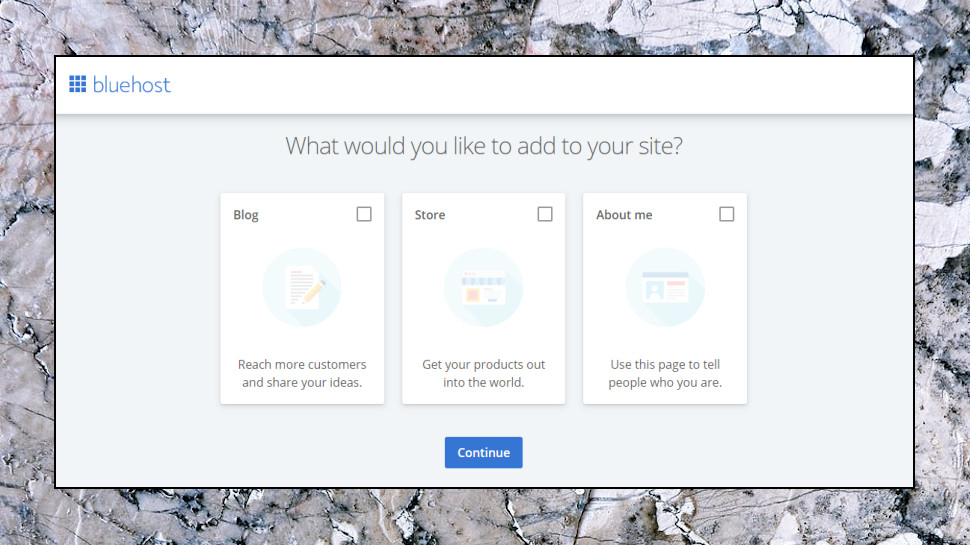
Creating a website
Paying for our Bluehost plan was quick and easy, and after handing over our cash, a wizard walked us through the initial site setup. This was far more interesting than the regular 'what's the name of your site?' questions, asking for example whether we needed a blog, where its posts should appear (the home page, somewhere else), and more. That's good news, as it enables Bluehost to do a much better job of setting up the site to suit your needs.
Another prompt asked whether we needed a web store. Agree, and the wizard also installs and activates WooCommerce, the hugely capable WordPress e-commerce platform.
After asking about our website goals and allowing us to choose a theme, the wizard finally installed WordPress and redirected us to Bluehost's control panel.
While many web hosts either dump you into a bland home page with basic details about your account, or maybe some highly technical control panel, Bluehost begins with a simple task-based control panel.
For example, the site presented us with five actions: Customize site design (colors, fonts, layouts), Add a contact page, Add content, Set up your store, Add a product or service (to the store).
This approach can't do everything for you. When we chose 'Add content', for instance, we were taken to the WordPress 'Pages' manual, but it was left to us to figure out how to add or edit a new page. Still, that's only to be expected, and overall Bluehost's system offers vastly more help and assistance to beginners than is par for the course.
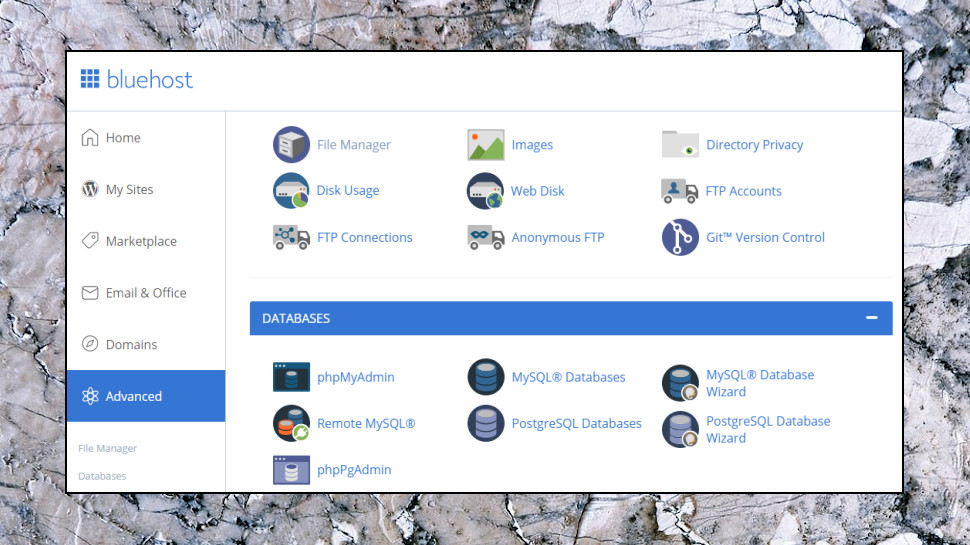
Experienced users probably won't be interested in any of this handholding, but Bluehost hasn't forgotten them. Tapping the Advanced option in the sidebar takes users to a full-featured cPanel setup with a file manager, FTP setup, phpMyAdmin and MySQL management, email account creation, metrics, security options and more.
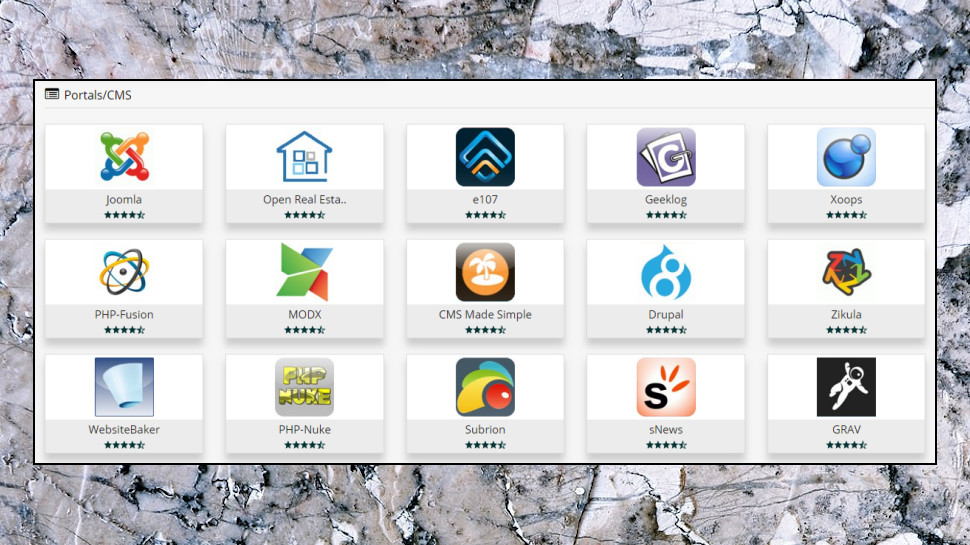
If you didn't install WordPress earlier, Softaculous is on hand to automatically set up hundreds of top apps: Joomla, Drupal, PrestaShop, osCommerce, and assorted other blogs, wikis, forums, image galleries and more (check out the full list on the Softaculous site.)
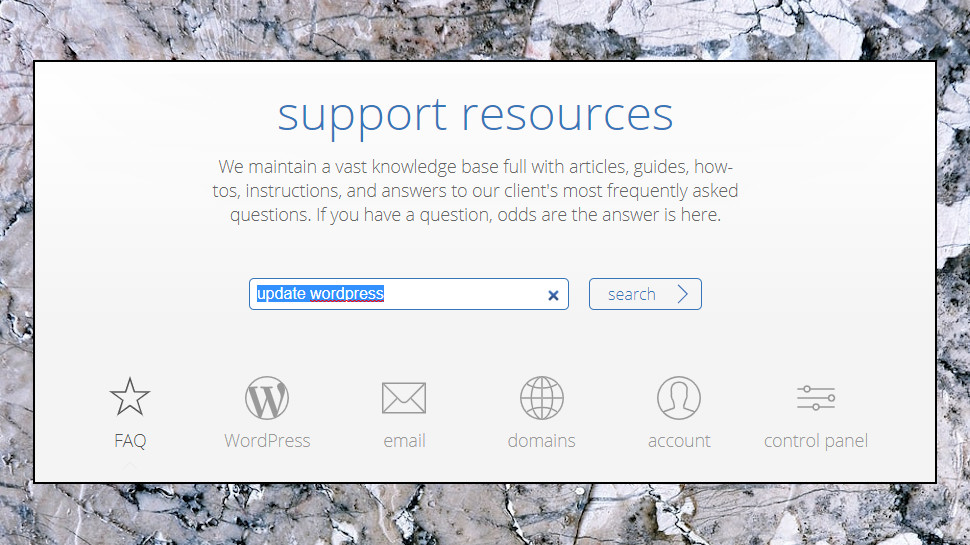
Support
Bluehost support starts on the website with a convenient system alert page. Not only does this provide general warnings about major outages, but you can also use it to check information on any domain or server (this even lets you see server load.)
Bluehost's knowledgebase organizes its content into various well-chosen categories: FAQ, Domains, Email, WordPress, Control Panel, Account and more.
Click any category and the site displays a decent choice of starting articles. For example, click Email and you'll see articles including Create An Account, Setup An Email Client and Manage Your Accounts – just what you're most likely to want to know.
You can search for your preferred keywords, too, and the engine does a reasonable job of finding sensible results.
When we searched for 'import WordPress', for instance, the site listed 'How To Migrate An Existing WordPress.com Site' and 'How To Migrate A WordPress Site' as its first two articles, and there were other relevant articles just a little way down the list ('How To Transfer Blogger To Your WordPress').
There's some quality content here, too. Articles like 'How To Install WordPress' are short but get straight to the point, and (when possible) give you several options to solve your current issue. They typically link to related content, too, so once you've found one relevant article, it'll usually point you to many more.
If the website can't help you, support is available 24/7 via email, telephone and live chat.
We tried the live chat support, providing our email address and details and posting a simple product question. Within a couple of minutes, an agent arrived, told us everything we needed to know, and fielded a couple of follow-up questions with ease.
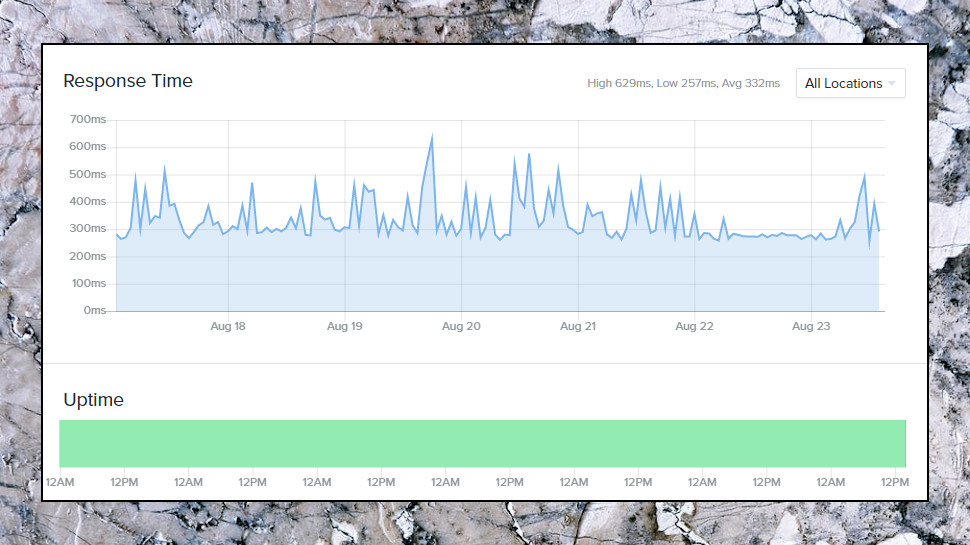
Performance
To test Bluehost's performance, we set up a very simple static website and used Uptime.com to check its availability and response time for a week.
The company managed 100% uptime, which works for us. Keep in mind that we were testing the most basic shared hosting plan, too – if Bluehost is going to have problems, we'd expect them to show up here.
Response times ranged from 257ms to 629ms, with an average of 332ms, placing the company 19th out of 27 providers we were monitoring at the time. While that's not great, keep in mind that the differences in response times between good providers are generally very small (only 60ms separates the ten hosts immediately above Bluehost.) Unless you're running benchmarks of your own, you might not notice any difference.
Bluehost scored better in Dotcom-Tools' Website Speed Test, which measures site download speed from 16 locations in Europe and the US. Average page load times were 748ms, up with the best providers and twice as fast as some of the low-end competition.
To round off our tests we ran Bitcatcha's Server Speed Checker on our test site. This kind of one-off test can't tell us as much as Uptime.com's continuous monitoring, but it was still good to see Bluehost return excellent speeds, particularly from US locations. Bitcatcha was certainly impressed, awarding our server its highest A+ rating.
Final verdict
Bluehost products aren't as configurable as some of the competition. Its plans are well-specified, though, with 100% uptime and fast download times during testing, and quality live chat support available if you need it.
- Best overall web hosting services
- Best WordPress hosting providers
- Best cloud hosting providers
- Best Linux web hosting services
- Best e-commerce hosting
- Best dedicated server hosting
- Best small business web hosting
- Best Windows hosting services
- Best managed web hosting
- Best green web hosting
- Best business web hosting
- Best colocation hosting
- Best email hosting providers
- Best VPS hosting providers
- Best web hosting resellers
from TechRadar - All the latest technology news https://ift.tt/35gvOdt
via IFTTT
I recommend to read this article Difference between IMAP and POP3
RépondreSupprimer